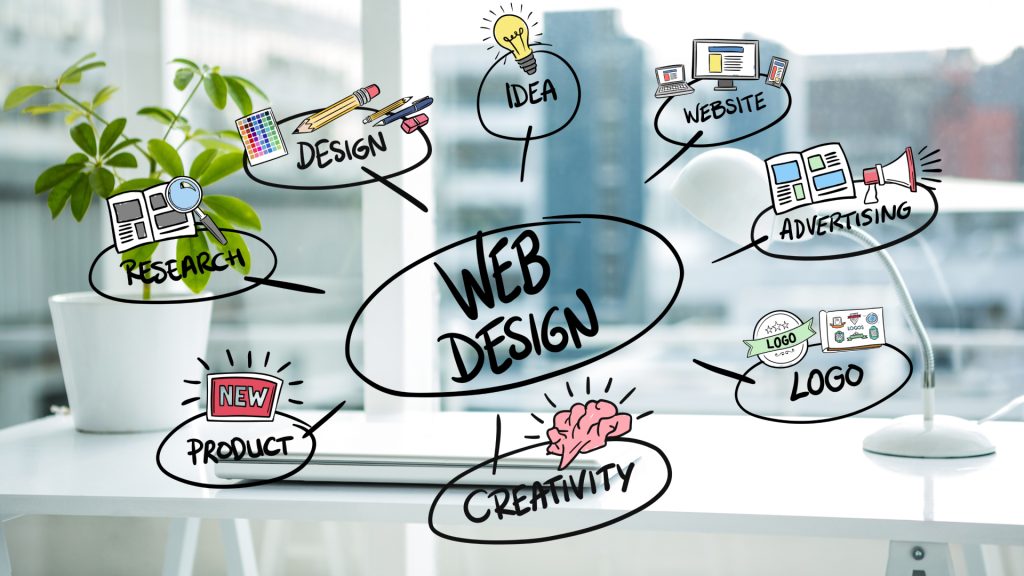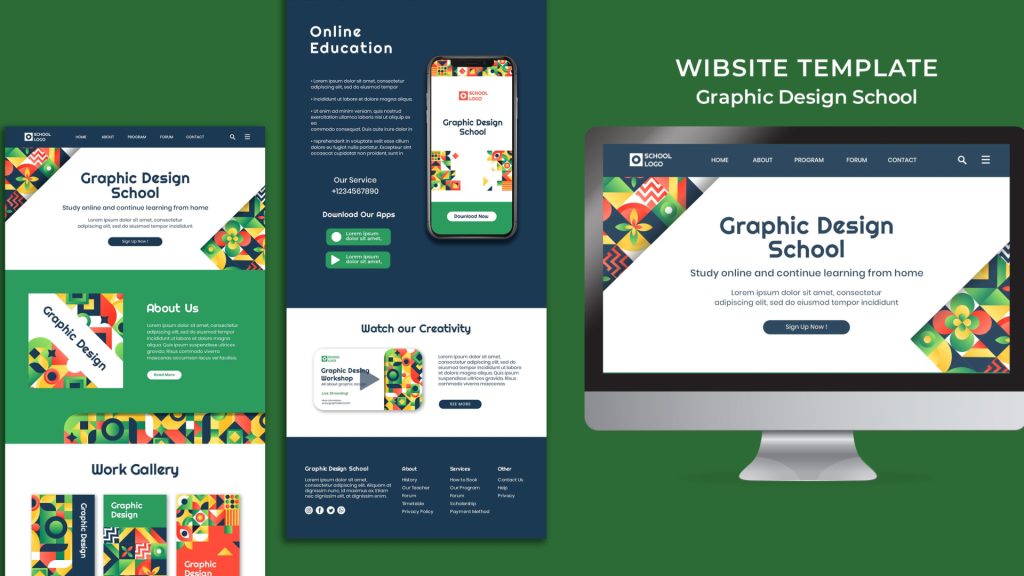Custom Website vs. Template-Based Website: What’s Right for Your Business?

Building a website isn’t just a technical decision; it’s a strategic one. It’s not just putting up some digital storefronts or a couple of landing pages; it’s deciding how your brand is going to present itself online, how it’s going to talk to customers, and scale as your business scales. That decision begins with a fundamental question: Which one to choose custom website vs. template-based website?
There isn’t a one-size-fits-all approach here. Every business operates based on its own set of priorities; some are racing against the clock to be up and running as soon as possible, while others are taking the time to build a differentiated web presence that has a story to tell. You might be looking for something sleek and modern, or maybe you need heavy functionality to integrate with long-term growth plans. Each path, whether going fully custom or selecting a pre-designed template, has its disadvantages.
Two Approaches, Two Mindsets
On the one hand, you have the bespoke approach: a website designed to meet your exact requirements for look, usability, and brand identity. It’s like having a made-to-measure suit in your own measurements; it fits superbly but is more time- and money-consuming. A template website offers speed, convenience, and affordability instead. It’s an ideal way of launching quickly, especially if your requirements are simple or your budget is limited.
But this is not a simple “good vs. bad” argument. It’s more complicated than that. The correct choice is based on where your company is at the moment and, equally so, where you want it to go. Are you developing for the long term or feeling the waters? Are you scaling fast or just trying to establish your first online presence?
We will here in this blog analyze the advantages and disadvantages of custom and template websites, help you weigh the important distinctions, and provide you with pragmatic suggestions on choosing the approach that suits your business needs. Whether you are a new startup, a new business on the rise, or an established business looking to reimagine your online presence, learning about these two paths will allow you to make an improved, future-proofed choice.
Finding Custom Websites
A custom site is like commissioning a building. There are no prefabricated components; instead, each component from the wireframes and navigation flow to the visual look and backend infrastructure is created to meet your company’s specific needs. You’re not selecting from a menu; you’re cooking your own dinner using raw ingredients, and a group of developers, UX planners, and designers all collaborating to craft the digital experience you want.
This route is best chosen by businesses that appreciate uniqueness, complex functionality, or can envision large amounts of future customization requirements. Custom websites are not tied to predetermined styles such as templates; they are tabula rasa where the only restrictions are your budget, imagination, and timeline.
Benefit of Custom Websites

Complete Design Freedom
You have complete power over the look and feel of your site. Fonts, icons, design, animation for each pixel are yours to customize. Asymmetrical home page? Interactive story? Sliding multilingual navigation bar in place of a click? Don’t sweat it. You’re not shoehorning your brand into a design; you’re building a design from your brand.
Scalability & Future‑Proofing
Want to incorporate proprietary CRMs, automate business processes, or incorporate advanced analytics dashboards? With custom development, growth is a matter of planning, not compromise. Your site architecture can be established with flexibility in mind, room for evolving functionality and features along the way without having to rebuild everything.
Optimized User Experience
As opposed to relying on standard frameworks, tailored sites are designed with your unique audience’s behavior and needs in mind. You might need to map particular user flows, conduct A/B tests on core pages, and tweak frequently to enable conversion. Page load speed and CTA placement can be optimized to optimal effect.
Brand Positioning
Let’s be realistic: first impressions matter. As soon as a user arrives at your site, you have seconds to make an impact. A custom site allows your brand voice and values to shine without restriction, allowing you to escape a marketplace in which numerous companies rely on off-the-shelf imagery and generic trends.
Performance and Technical Optimization
Speed equals money on the internet. Custom websites can be written with lean, clean code, no unnecessary plugins or old scripts, slowing it down. Builders can tune every line for best loading, cross-device flexibility, and SEO optimization, so the site is nimble and robust.
Need a Reliable Custom Website Development partner to help grow your Business?
Our Experts Can Help!
Disadvantages of Custom Websites
Higher Cost
Let’s not sugarcoat custom websites aren’t cheap. You’re paying for time, talent, co-creation, and forward thinking. Depending on the complexity, you’re potentially looking at thousands (or tens of thousands) of upfront costs, which may be prohibitive for startups or solo founders.
Longer Timeline
Because every element is tailored, custom sites take longer to build. From discovery to deployment, expect a week possibly months long process. Testing, debugging, and feedback from stakeholders all contribute to the process, so if speed is important, this could be a drawback.
Maintenance Responsibility
After you go live on the site, it does not function on its own. You will likely need constant technical assistance with bug work, security patches, content publishing, and system optimization. This could involve keeping a developer or working with an extended-term agency partner.
Advanced Project Management
A successful custom site project isn’t so much about quality code; it’s about effective coordination. With designers, front-end and back-end developers, project managers, and even writers, timelines and alignment are hard enough to manage, let alone the actual project scope.
Understanding Template‑Based Websites

Template websites are plug-and-play-like websites. They rely on pre-built templates, most of which come through websites such as WordPress, Wix, Shopify, or Squarespace users to populate their content, images, and branding. Templates are well-suited for individuals, small businesses, and groups with limited budgets or technical skills.
Think of it as a rented apartment versus a home. You pay to move in, decorate it your style, maybe paint one wall but alter the building? Not goanna be so easy.
Template-Based Websites’ pros
Economical
This is among the largest attractions. Templates usually have minimal initial costs. Most of them are free, and top-of-the-line themes are hardly more than a few hundred bucks. Added to the DIY style, companies can save drastically on design and development costs without losing a digital presence.
Speed of Deployment
Templates are plug-and-play, essentially. With a little content and some clicks, your site could be live in a couple of days. It’s ideal for businesses who need something up quickly, maybe for an event, a campaign opening, or MVP launch.
User-Friendly Platforms
Most template websites are for non-coders. With drag-and-drop editors, visual builders, and live previews, building a site no longer needs to involve technical expertise. No code? No issue. You can switch content, rearrange sections, and keep your site up to date without summoning a developer to do so every time.
Built-In Features
Modern templates have a remarkable amount of pre-baked functionality: blog pages, contact forms, search engine optimization settings, social media integration, basic e-commerce functionality, and so forth. Most small businesses can manage these default functions in their nascent stages.
Reliability of Tested Designs
Since templates undergo testing and usage by thousands of websites, they are usually best practice when it comes to layout, accessibility, and responsiveness. You don’t have to worry about whether the button is small enough for a mobile screen or if the menu is tablet-friendly; it’s already been done.
Template-Based Site Drawbacks
Limited Customization
Here’s the twist you can’t completely warp a template to your will. If you want to have a significantly different look or feel, you may be in trouble unless you dive into the code (which negates the no-code appeal). Deep customization usually involves plugin add-ons or programmer help.
Brand Homogeneity
Templates are used by thousands of people. Even if you swap out the logo and substitute a couple of images, there’s a reasonable likelihood that your site might look oddly familiar to someone else. In markets where differentiation is critical, this can be a serious drawback.
Scalability Constraints
Templates are typically designed for light sites. The more complex your needs become integrating, automating, or advanced user flows, the breaks begin to show up. Most organizations find themselves having to transition to custom solutions later, which equates to double the cost.
Bloated Code & Performance Problems
Because templates are made for a wide audience, they generally contain excess code, unused features, or multiple plugin dependencies. All that the bloat does is slow down your website. Slow loading isn’t just frustrating visitors; it’s bad for your SEO rankings and your conversion rates as well.
Maintenance & Plugin Dependency
Relying on third-party plugins is a blessing and a curse. Plugins bring capabilities but also increase the potential for conflicts and bugs, especially after a plug-in update. If a plug-in drops out of support, it can destroy part of your site. Navigating this universe requires watchfulness and occasional troubleshooting.
Head‑to‑Head Comparison: Custom vs. Template
Here’s a comparison across key factors:
| Factor | Custom Website | Template‑Based Website |
| Cost | High upfront & maintenance expenses | Low setup and upkeep costs |
| Speed to Launch | Weeks to months | Hours to days |
| Design Flexibility | Total creative control | Template-bound customization |
| Scalability | Highly scalable and extendable | Limited beyond original template scope |
| Technical Skillset | Professional developers required | Accessible to non‑technical users |
| Uniqueness | Fully unique branding | Risk of similar looking competitors |
| Performance | Optimized for speed and efficiency | Possible bloat without careful upkeep |
| Maintenance | Dependent on hired professionals | DIY with community support and doc |
Which One Aligns Your Business Goals?
Starting a Small Business or Solo Venture
Best Fit: Template‑based approach
Why: You have limited capital and want to establish an online presence quickly, perhaps as a freelancer, coach, or local shop. A clean, functional template can help you live fast with minimal financial strain.
Mid‑Sized Business with Growth Potential
Best Fit: Begin with a template; prepare for upgrade
Why: You may balance cost and customization needs. Use a template to get started and plan a transition to a custom solution as you grow.
Established Business or Ambitious Startup
Best Fit: Custom website
Why: When you’re scaling, adding complex functionality, and aiming for a distinctive brand, a custom solution allows flexibility, durability, and advanced performance. It’s a strategic investment.
Niche or Highly Regulated Industries
Best Fit: Custom website
Why: Areas like fintech, legal, or healthcare often have specialized needs security, compliance, integrations that presentation-layer templates can’t reliably support.
Temporary or Seasonal Projects
Best Fit: Template-based approach
Why: For campaigns, events, or brief product launches, a template or even a landing-page builder is fast, affordable, and effective for short-term needs.
Beyond the Binary: Hybrid Solutions
You don’t have to choose one approach for your life. Many businesses mix both worlds:
Custom Front‑End + CMS Back‑End
You can build a unique interactive UI connected to a template-driven CMS like WordPress.
Template Core + Custom Plugins
Customize functionality through bespoke modules e.g. booking systems, analytics dashboards while keeping the template intact.
Phased Strategy
Start with a template MVP (minimum viable product) to test early market interest, then invest in custom development once traction is proven.
Page Builders with Advanced Features
Plugins like Element or Pro, Divi, and Oxygen allow near-custom capabilities without full coding, offering a middle ground.
Need a Stunning Custom Website Development Services?
We Can Help!
Cost Breakdown & Budgeting
Here’s an indicative cost snapshot based on typical market rates in India, though global comparisons won’t vary drastically:
| Type | Typical Price Range (India) | Estimated Timeline |
| Basic Template Setup | ₹5,000–₹20,000 (~$60–$240 USD) | 1–7 days |
| Moderate Template + Plugins | ₹20,000–₹50,000 (~$240–$600 USD) | 1–3 weeks |
| Simple Custom Website | ₹50,000–₹150,000 (~$600–$1,800 USD) | 4–8 weeks |
| Comprehensive Custom Build | ₹150,000–₹500,000+ ($1,800–$6,000+) | 3–6 months |
These figures include design, development, and deployment. Ongoing costs like hosting, maintenance, and updates are additional.
Key Decision Drivers
To make intelligent decisions, ask yourself:
- Budget – What is your hard-earned expenditure today, and how much can you sustain over the long term?
- Timeline – Must you move fast to get to the market, or do you have the option to iterate?
- Brand Positioning – Is making a differentiated impression most important, or is velocity more important?
- Growth and Complexity – Will there be future integrations or technical enhancements?
- Risk and Support – Do you support technical issues yourself, or do you need ongoing developer support?
- Content Control – Do you require easy updates, or can you trust someone for changes?
- Technical Resources – Do you have a developer/designer on hand, or would using a template with support be more convenient?
Real‑World Scenarios
Freelance Photographer
- Little capital, clear visual identity, low interactivity.
- Start with: A barebones photo template on Squarespace or WordPress.
- Upgrade later: Gallery style enhancements, lean shop capabilities.
Local Bakery / Cafe
- Limited budget needs menu display, reservation or order forms.
- Start with: A good restaurant template.
- Upgrade later: Food delivery or loyalty program plugins integration.
SaaS Startup
- Positioning is important for the brand; it needs to express value, capabilities, and sign-ups.
- Use: Custom site, bespoke UX, animations, integrations with live chat and analytics.
Law Firm or Consultancy
- Needs to be professional, compliant, custom intake forms, and possibly client portals.
- Use: Custom site security, credibility of design, expert features.
Event or Conference Website
- Temporary with defined start/end.
- Use: One-page template; easy, fast, inexpensive.
Avoiding Common Pitfalls
- Scope Creep: Define project objectives clearly. More features in custom builds mean runaway costs.
- Plugin Bloat: Have quality plugins on template install; too many makes it slow, offers more vulnerabilities.
- Bad Responsiveness: opt for mobile regardless of how you do it.
- SEO Neglect: Speed, meta data, and image optimization are all important. Treat SEO early dev tools like it matters.
- No Ongoing Support: Have someone tasked with updates and site health, either you or a dev.
Making the Final Call
Here’s a simple roadmap:
- Specify your aim: e.g., release date, working function, brand visibility.
- Set your budget and timeline.
- Align your situation: Use the decision tree above.
- Phase in a solution: Light first, then reinvest.
Screen your vendors with care: For custom work, ask for portfolios and referrals. For templates, choose well-established providers with good support.
Final Thoughts
Deciding between a template and a custom site is not a “right vs. wrong” issue; it’s a question of picking what works for your business at the time. A template may be all you need to start and try out your concept. A custom site, however, more costly and time-consuming to build, sets up a foundation that is built with the intention of being tailored to your brand, your users, and your growth in the future.
Here’s the summary:
- Kickstarting with a template: quick, cheap, great for MVPs and small businesses.
- Customize fully custom: best for brands that require control, differentiation, and scale.
Keep in mind that most businesses change, and your site can too. If you go with a template now and are going to upgrade later, or go with custom from day one, ensure that whatever you have can scale as you do.
Action Plan Decoded
If you have no idea where to begin:
- Review your timeline and budget.
- Start small if you must but be prepared to grow later.
- Have someone who is held accountable for site maintenance, even if it is just regular updates and backups.
- Budget for updates: your first website is not necessarily your last.
Still unsure? Get in touch with a seasoned developer or agency who can guide you through an appropriate brief. A brief consultation could cost you future headaches and dollars.
I’d be delighted to help you write that brief, compare platforms, or choose the appropriate tools to turn your website dream into a reality!
 Shopify
Shopify










